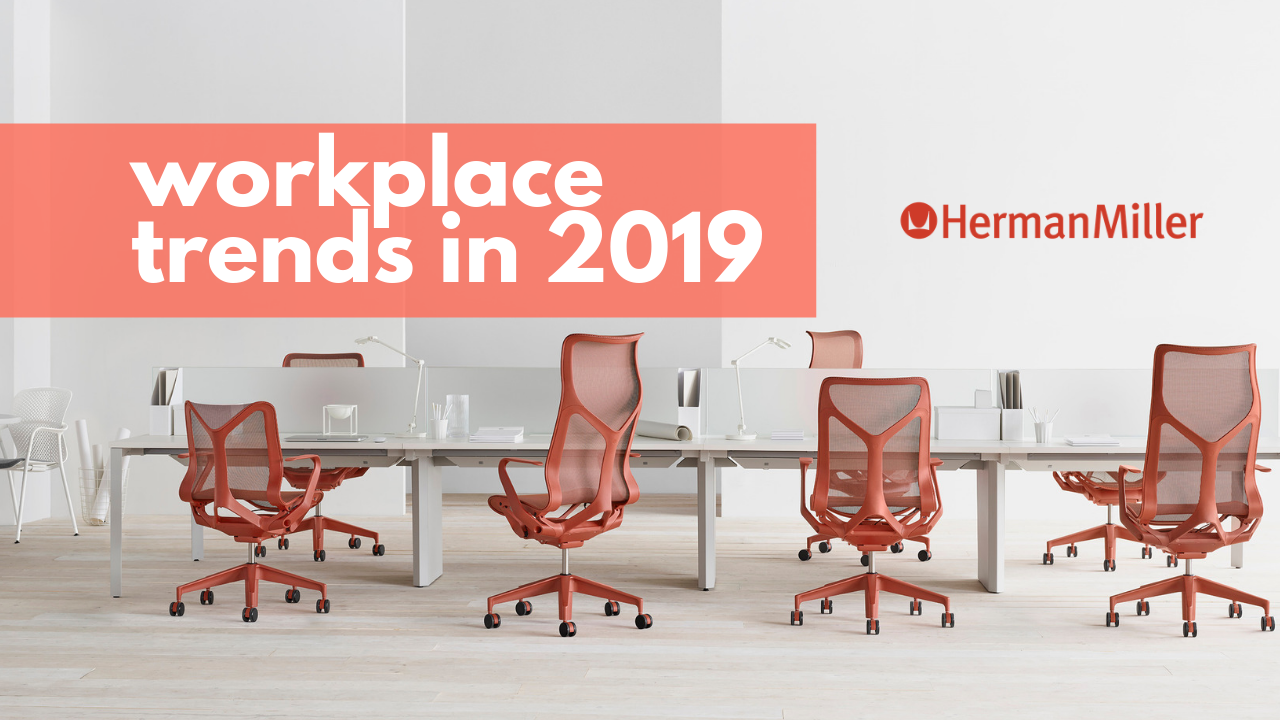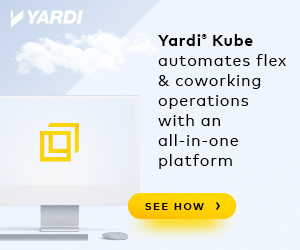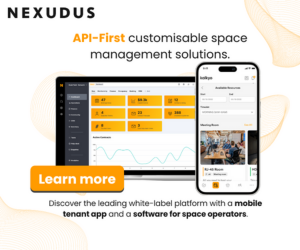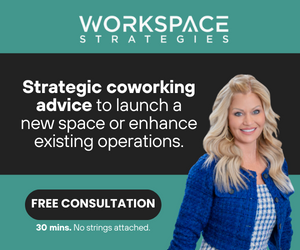- Herman Miller’s Emily Dunn discusses the top design trends set to impact flexible workspace in 2019
- Human-focused design can enhance the occupier experience by “differentiating between the need for focus versus the need for privacy”
- These factors can help coworking operators create spaces that are healthy and stimulating for their members
2019, workplace design will feature a growing emphasis on well-being and designing for the human element, with furniture and technology working in tandem to provide the flexibility to support the multitude of work modes individuals and groups engage in daily.
Allwork.Space spoke with Emily Dunn, workplace knowledge consultant for Herman Miller, to learn more about what’s in store for the flexible workplace in the coming year.
Supporting the human element.
Corporate work environments aim to address fundamental human needs and coworking spaces should be no different, according to Dunn.
“People don’t go to coworking spaces because they have to. They’re there because they choose to be.”
“If people are concerned about their health and well-being, having an environment that supports that will be very appealing,” she explained.
Dunn suggests using the WELL Building Standard, an industry certification that sets standards for air, water, nourishment, light, fitness, comfort and mind components for a building and its occupants, as a guide to encourage positive behaviors.
Suggested Reading: How The WELL Building Standard Can Help Operators Attract More Corporate Clients
Using design elements to encourage healthy behavior
Design elements can support change management by encouraging occupants to use space differently, Dunn explains. “It’s about promoting good behavior, teaching people why things are where they are and what they’re meant to do so that they intuitively make the right choices.”
Features such as open stairwells and centralized trash cans encourage people to leave their desk more often and keep moving, as are outdoor trails that can inspire walking meetings.
Displaying informational signage to help manage behaviors is one component of the WELL building standard. However, an even more thoughtful approach can build community, create greater engagement and encourage healthful behavior, according to Dunn.
For example, WELL suggests art be placed in staircases to encourage usage. Taking it a step further might be developing a community group of art aficionados who choose the pieces on display and rotate them quarterly.
“It gets people involved in that space. They understand that it’s a space they own, and they want it to be healthy and mentally stimulating, for them,” she said.
Leveraging niche spaces to customize individual and group support
Instead of one size fits all, the growing number of niche-focused spaces help improve the user experience by creating environments easily customized for the particular population.
For example, in the burgeoning number of women-focused spaces could be design touches that support women’s individual comfort such as storage for commuter shoes and restaurant-style purse hooks to hang bags near workspace, Dunn suggests.
It’s also an opportunity to resolve one of the most contentious issues in a workplace: temperature.
“The typical office temperature is maintained to support the metabolic rate of a 40-year-old male,” explained Dunn, who holds a master’s degree in design and environmental analysis from Cornell.
Indeed, a study, published in Nature Climate Change, suggests that women’s average metabolic rate is 20 to 32 percent lower than standard office temperatures that are calibrated based on 1960s men’s clothing insulation and body heat production; a finding that helps explain the frequent discontent around frigid offices.
“It’s why women are inherently cold,” Dunn adds.
Warmer, more comfortable temperatures can improve productivity, added Dunn, referencing Cornell University research that determined that workers are more efficient and significantly more productive when they’re warm.
Other benefits of niche-focused spaces may be activity-based, such as providing networking opportunities within a community of like-minded individuals. “In those spaces you want to create an environment that fosters informal interactions,” said Dunn.
Industry-specific niche spaces also provide opportunities to support particular group and individual needs.
For example, an architect-focused space enables individuals and partnerships to share hardware and software they wouldn’t buy for an individual practice but make sense to share as a group, related Dunn. “They may need 3D printers, or software licenses, along with space to spread out floor plans that may not be acceptable or possible in other environments.”
Supporting 10 work modes
Supporting the human experience also means providing the appropriate setting for the type of work being done. While a common approach is to identify types of focus and collaborative work and segregate spaces accordingly, Herman Miller has identified 10 types of work modes, including three individual and seven group-based activities.
While intuitively we may associate “alone” work with a need to be in a private, enclosed space, Herman Miller’s research distinguishes the types of alone work being done, and the space required to support it.
“It’s important to differentiate between the need for focus versus the need for privacy,” Dunn emphasized.
An alone activity designated “Process & Respond,” such as writing emails, is the type of alone work can be done anywhere in an open setting while “Contemplating” may require an area that’s not disruptive.
“Making a doctor’s appointment, getting lab results or one-on-one support requires confidentiality and privacy,” Dunn notes.
“Those are different alone activities, and they require different types of settings to support them.”
One strategy is to create a library style group space modeled after the quiet car on a train. “The actions are self-managed since everyone knows the appropriate behavior,” Dunn notes.
Providing a quiet group space can avoid the all-too-common scenario of people “squatting” in rooms designated for confidential short-term calls or meetings, just to access a quiet space. Deliberate design features and perch-style seating can aid adherence to stipulated time limits.
Similar distinctions are found in group-based work.
“Some collaboration is an opportunity to connect and build community such as grabbing coffee and chatting for 5 minutes,” Dunn notes.
On the other hand, developing creative concepts and solutions is an entirely different type of group interaction, requiring an alternative setting, according to Dunn, adding that group collaborative work is not always done exclusively with technology.
“You need to support the analog creative process: brainstorming, whiteboarding, pinning things up,” she explains. “Coworking tends to be good about providing power, making it easy to connect with all the technology. But they might miss some of those other elements important in supporting thought and innovation.”
Flexible furniture
While much discussion about the flexible workplace focuses on spaces that can adapt from one activity to another through the day, such as the café that functions as a work or ad hoc meeting area, it’s important to have furniture that supports flexibility as well, according to Dunn, particularly in hot desking or other flexible settings where multiple people utilize the same furniture.
“An ideal conference room chair is one where you don’t have to make a lot of adjustments to support you. It should be great for sharing, and allow you to turn and sit sideways or rest your arms.”
Herman Miller recently introduced Cosm, a chair specifically designed to support interaction that’s more informal without the need for sensors or other devices to recall movement or manual adjustments to customize comfort. It adjusts automatically to the needs of the user.
Another trend is furniture with technology embedded to support the user, such as sit-to-stand desks that can be controlled with an app. It asks the user to input their height profile, and the system will provide the appropriate height for working seated and standing and recall settings whenever that individual returns to that workstation.
Like an Apple watch, the app can signal a gentle nudge to remind users to move from sitting to standing.
Dunn poses some important questions to ask early in the planning discussion: Will there be a need to adjust the settings at a later date? Will there be a need to change walls around? Is it easy for owners and managers to adjust overnight or over the weekend?
“One space we were working with started out thinking about a typical open office approach, but later learned from potential users that there was a need for a higher proportion of small huddle rooms and private spaces,” Dunn recalled.
Alternatives such as free-standing phone booths add an element of flexibility when moving walls is not an option.
In all situations, maintaining a focus on supporting the human factor — whether in an individual or group setting — provides the best guideline for improving well-being in the workplace today and in the future.

 Dr. Gleb Tsipursky – The Office Whisperer
Dr. Gleb Tsipursky – The Office Whisperer Cat Johnson – Coworking Marketing Maven
Cat Johnson – Coworking Marketing Maven Angela Howard – Culture Expert
Angela Howard – Culture Expert Drew Jones – Design & Innovation
Drew Jones – Design & Innovation Andrea Pirrotti-Dranchak – Competitive Advantage
Andrea Pirrotti-Dranchak – Competitive Advantage Jonathan Price – CRE & Flex Expert
Jonathan Price – CRE & Flex Expert Jeremy Fennema – Tech Innovation Alchemist
Jeremy Fennema – Tech Innovation Alchemist







